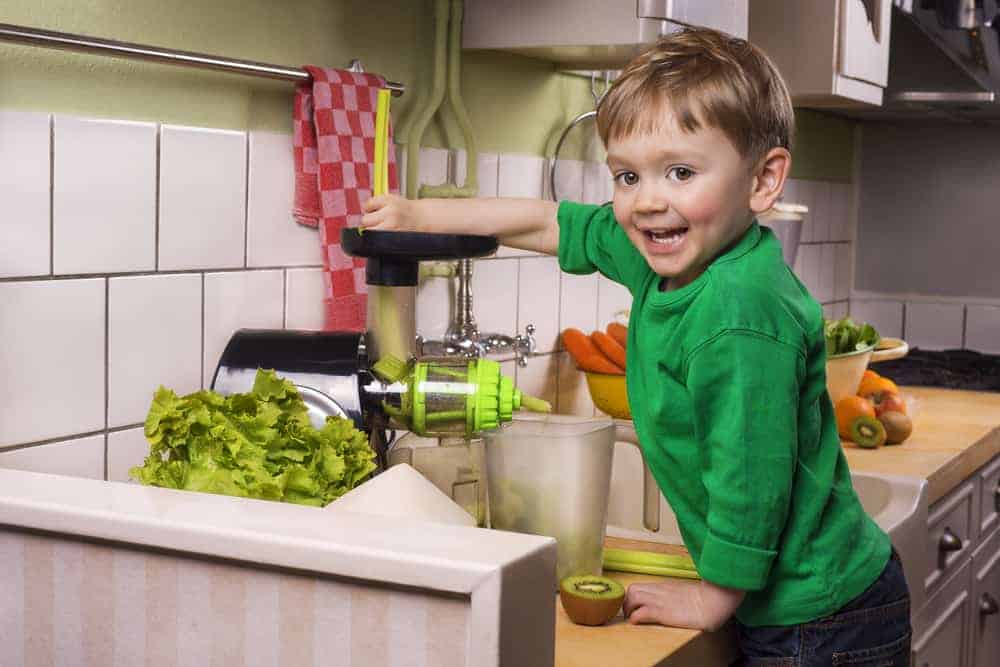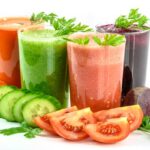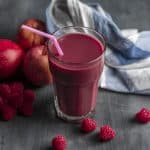Juicing for kids can be a very good way to encourage them to eat more fruit and veg. And it can even be a way of getting some vegetables into them that they might otherwise refuse to eat.

Juicing is a great way to get your kids to eat fruits and vegetables. Children tend to like juicing because there are no seeds or pulp to deal with, and it tastes good. Plus, juices are healthy.
We all know that fruit juice is good for kids. Not only does it contain vitamins, minerals, and other nutrients, but it’s also a great source of fiber. Fiber helps us feel full longer and keeps us from snacking on junk foods. But what’s the best way to make fruit juice? Most people would agree that squeezing a whole orange into a cup is not the best way to make juice. So use an electric juicer to make your juices.
Get more greens into your child’s diet
Sneaking vegetables into your child’s food is a great way to get them to eat better. And you can do it without them ever knowing! Juicing vegetables is a great way to do this. Click here to see some vegetable juicers you could use. One way is to add green vegetables to their juice. For example, spinach doesn’t have to be the only green vegetable in the mix. Kale, parsley, and tomatoes are all other options that you can add to juice when juicing for kids without them noticing.
Juicing is a great way to get your kids involved at an early age in preparing for juicing. The pre-teen years are a time when kids can start to cook and help in the kitchen. And the process of preparing fruit or vegetables for juicing is really very educational. For example, when you juice apples, the kids can learn about what an apple looks like on the inside. They get to see how the apple is made up of the skin, the seeds, the core, and the flesh, and how you can extract juice from them.
Today, spinach makes up 2% of all vegetables consumed in the U.S., and is second only to lettuce in per capita consumption. However, only 16% of school-aged children consume any vegetables daily, and only 16% eat enough dark green leafy vegetables weekly. And studies have shown that children who eat more fruits and vegetables have lower rates of obesity, high cholesterol, and heart disease.
The benefits of different vegetables and fruits
It can be hard to keep track of all the different benefits of different vegetables and fruits. One vegetable may help prevent some cancers. Another may help lower blood pressure, and a third may reduce the risk of heart disease. Experts can’t agree on exactly which fruits and veggies have the most health benefits. But there is one thing they all agree on: eating plenty of vegetables and fruits is essential to good health.
Fruits and vegetables are incredibly beneficial. They provide vitamins and minerals essential for good overall health and nutrition. They also help promote good mental health, as well as help ward off heart disease, cancer, stroke, and other serious diseases. Fruits and vegetables can also be good sources of fiber, which can help control blood sugar levels.
Some Vegetables To Try Juicing For Kids
Juicing is a great way to get kids to eat their veggies. Just don’t juice everything. Some of the vegetables that are best juiced for kids are carrots, celery, cucumbers, and apples. These vegetables are packed full of nutrients, vitamins, and minerals. Juicing will make it easy for your kids to ingest all of these nutrients without eating all the vegetables.
Cauliflower, Cabbage, Carrots, Broccoli, Brussels sprouts, Asparagus, Spinach, Fennel, Celery, Leeks, Cucumbers, Radishes, Onions, Garlic, Mushrooms, Lettuce, Zucchini, Parsnip, Green Beans, Beets, Squash, Radicchio, Arugula, Tomatoes, Endive, Turnips, Chard, Rhubarb, Watercress, Collards, Kale, Kohlrabi, Bok Choy, Rutabagas, Celeriac, and Chives.
How To Make The Best Juices For Your Kids
Making fresh juice for your kids is a simple way to make sure they are getting the vitamins and minerals they need. Juicing your own fruits and vegetables also gives you much more control. You choose the ingredients and nutritional content of your juice. And by choosing organic fruits and vegetables, you reduce their exposure to pesticides, herbicides, and other chemicals.
The process of juicing fruits is as healthy and natural as it gets. You get the goodness of nature in liquid form. It is natural, and very beneficial for your health if you use the right tools and do it right. If you want to make the best juices for your kids, you have to take care of the process. You have to make sure that you use the right tools. Using a good quality juicer you can make nutritious juices without compromising the health of your kids.
Juice is a great drink for kids and adults. It will not only provide your kid with the needed nutrients, but juices also taste great when compared to water. Just make sure that there are no additives or preservatives added in the juices when juicing for kids.
Kids will go crazy for this amazing, refreshing juice that you can make at home. You will need:
- 4 apples
- 2 lemons
- one small cucumber
- a cup of ice cubes
- a cup of water
- Wash the fruits and veggies.
- Cut the apples into slices, and chop up the cucumber into pieces.
- Juice only the lemons (the apples and cucumber will still get juiced, but they will be mixed in with the ice).
- Blend together the lemons and the ice.
- Add the water and blend.
- Pour the juice into a glass and enjoy!
Conclusion
Juice can be a healthy part of a child’s diet, as drinking juice can provide vitamins, minerals, and antioxidants. Juice can also be used as a meal replacement. However, juice should not be the only source of nutrients in a child’s diet. Juice should be added to a child’s diet, not the only source.
Juicing is a healthy alternative to drinking sugary drinks. Juices are high in vitamin c and antioxidants. Juices are a good way to get your child to drink more fruits and vegetables. Juices give your child more energy and make it easier to eat more produce. Juices can be sweet or tart and can be made with fruits and vegetables. Juices can be served cold, room temperature, or hot.
In the morning, your children will love homemade juice. And you will love the benefits. It’s inexpensive and the kids will get lots of vitamins and nutrients. Here are some tips for juicing for kids: ~
- Use only 1 or 2 fruits in the recipe. The sweet taste of fruits can mask the taste of vegetables.
- Don’t add any sweetening ingredients, such as sugar or honey. Kids will be more likely to drink the juice if it tastes like pure fruit.
- Avoid adding too many vegetables. ~ Make juice look fun by adding ice cubes or food coloring.
In conclusion, children today have so many food options that juicing for kids is more important than ever. A juicer is a great way for kids to learn about fresh, healthy food and to get excited about eating fruits and vegetables.





